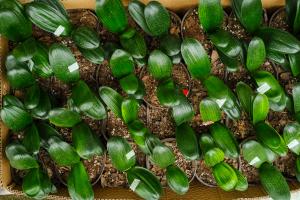How to Raise or Lower pH Level in Plant Water
One important factor in successful plant growth is maintaining the appropriate pH level in plant water. pH is the measure of acidity or alkalinity in a solution, with a neutral pH level of 7.0. If the pH level is too high or too low, it can negatively affect plant growth and health. Here are some tips on how to raise or lower the pH level in plant water:
Raising pH level
If the pH level of your plant water is too low, or acidic, you can raise the pH level by adding a base or alkaline substance to the water. One common way to do this is by adding baking soda to the water. Add a teaspoon of baking soda per gallon of water, and test the pH level with a pH testing kit. Repeat this process until the desired pH level is reached.
You can also use agricultural lime to raise the pH level in plant water. Agricultural lime contains calcium carbonate, which helps to neutralize acid in the water. Add 1 tablespoon of agricultural lime per gallon of water, and test the pH level. Repeat as necessary until the pH level reaches the appropriate level for your plants.
Lowering pH level
If the pH level of your plant water is too high, or alkaline, you can lower the pH level by adding an acid to the water. One common acid used for this purpose is vinegar. Add a tablespoon of vinegar per gallon of water, and test the pH level. Repeat as necessary until the desired pH level is reached.
You can also use citric acid or sulfuric acid to lower the pH level in plant water. These acids should be used carefully and in small amounts, as they are strong acids. Add a small amount at a time and test the pH level until the desired level is reached.
Monitor pH level
It is important to monitor the pH level of your plant water regularly to ensure that it remains in the appropriate range for your plants. Use a pH testing kit to test the water once a week or more often if necessary. Keep in mind that different plants require different pH levels, so it is important to research the appropriate pH level for your specific plants.
In addition to adjusting the pH level in your plant water, you can also use pH-adjusted fertilizers or supplements to help balance the pH level. These products are specifically designed to help plants absorb nutrients more efficiently in specific pH levels.
Conclusion
Maintaining the appropriate pH level in plant water is crucial to the health and growth of your plants. Whether you need to raise or lower the pH level, there are several ways to do so using common household items. Remember to monitor the pH level regularly and adjust as necessary to ensure the best possible growing conditions for your plants.

 how many times do yo...
how many times do yo... how many planted tre...
how many planted tre... how many pine trees ...
how many pine trees ... how many pecan trees...
how many pecan trees... how many plants comp...
how many plants comp... how many plants can ...
how many plants can ... how many plants and ...
how many plants and ... how many pepper plan...
how many pepper plan...





























